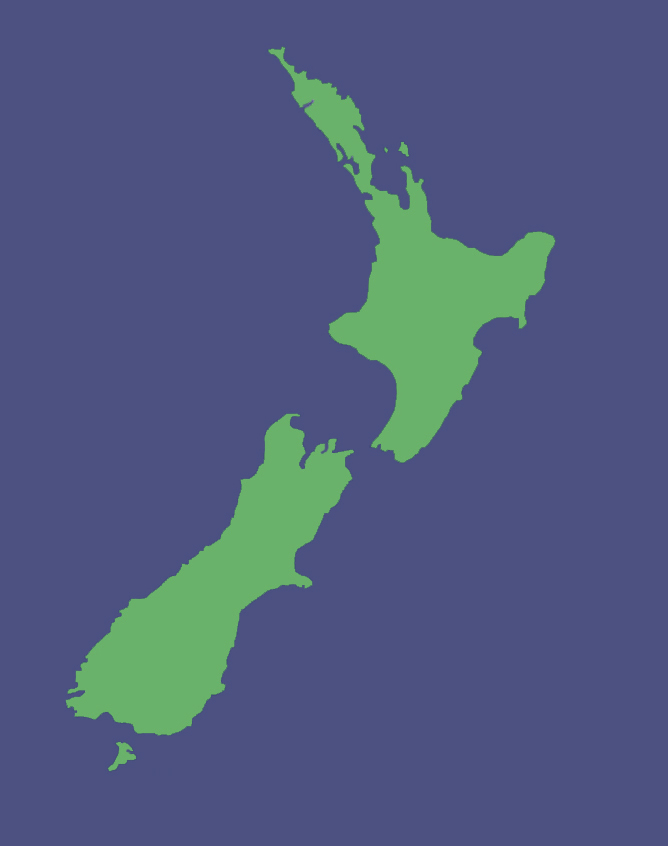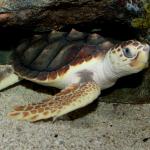- Home
- Herpetofauna Index
- Native
- Caretta Caretta
Caretta caretta
Loggerhead turtle
Caretta caretta
(Linnaeus, 1758)

Length: Up to 1.2 m, but may reach in excess of 2 m.
Weight: Typically, in the range of 100-200 kg, but reports of animals up to 545 kg.
Description
This beautiful species is the largest hard-shelled turtle in the world and is characterised by its large head and beak, short flippers, and reddish-brown shell.
Identification
Distinguished from other marine turtles by its robust head and flippers, as well as by its ovoid to heart-shaped carapace (shell) which is often a reddish-brown in colour, and is arranged with 5 vertebral scutes (shields) running down the centre of its carapace, and 5-6 pairs of costal scutes (shields) arranged on either side.
Distribution
A vagrant (outside its normal range) in New Zealand waters.
This species typically occurs throughout the temperate and tropical waters of the Pacific, Indian, and Atlantic Oceans but has been sighted several times in New Zealand waters (mostly around the northern North Island, but has been reported as far south as Stewart Island).
Diet
This species is primarily carnivorous with large powerful jaws which are specialised to feed on shellfish, additionally, they have been observed feeding on fish, jellyfish, sponges and algae.
Ecology and habitat
The loggerhead turtle as with several of the other marine turtle species spends its juvenile stage in the open ocean and adult-life in shallower coastal waters.
Loggerheads play a significant role in dispersing calcium throughout the marine environment, this is largely due to their primary prey being shellfish, which means that the calcium that is stored in the shells of their prey slowly passes through their digestive tract and ends up being excreted throughout the environment for other animals to utilise.
Life expectancy
Estimated to be between 47-67 years, but may potentially be longer.
Social structure
Solitary, but females congregate at nesting grounds.
Breeding biology
Loggerhead turtles do not breed in New Zealand.
Females are intermittent breeders, reaching maturity at around 25 years, at which point they start heading to their natal nesting sites (which they return to at 2–4-year intervals), often nesting several times during the season. Nests consist of around 120-150 soft-shelled eggs, which are buried in deep holes that they dig with their large flippers. Eggs hatch after 60-80 days.
Disease and threats
The loggerhead turtle is a host for many of the parasites, and diseases present in other marine reptiles, none of which pose a significant risk to the survival of the species. Of more concern are the many human-induced issues, resulting from the contamination of their habitat. The most significant being the consumption of marine plastics which bear a striking resemblance to the jellyfish, and other soft-bodied creatures which they primarily prey upon. Boat-strike, light pollution, exploitation of animals and eggs for food, as well as mortality as bycatch represent additional threats to their survival.
References
van Winkel, D., Baling, M., Hitchmough, R. 2018. Reptiles and amphibians of New Zealand – a field guide. Auckland university press, Auckland New Zealand.



